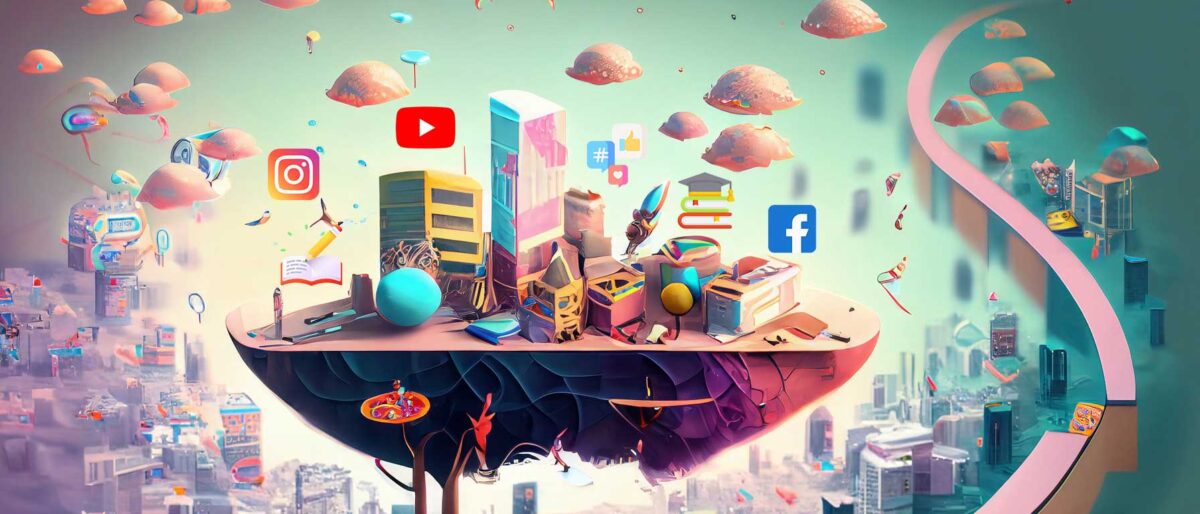With a staggering 4.72 billion users worldwide, social media has transformed how we communicate and connect with one another, extending its reach beyond our personal lives into the realm of education.
Social media offers a versatile platform in education, serving as a space where students can collaborate on projects, virtual classrooms can be established, and teachers can genuinely engage with their students. Moreover, it grants students access to resources that might otherwise remain out of reach.
The primary advantages of incorporating social media into education are manifold. It connects students to experts on a global scale, fosters communication and collaboration among peers, and establishes a vibrant arena for the exchange of ideas and information. Additionally, it provides a unique opportunity for teachers and students to build profound relationships.
In this article, we will explore some of the most effective ways to leverage social media in education, transforming it into a dynamic and interactive tool that enhances the learning experience.
1. Share Visually Appealing Content
Social media serves as a potent tool for educational institutions to exhibit their visually captivating content, broadening their reach and facilitating interactive engagement. Schools can utilize platforms such as Facebook, Instagram, and Twitter to spotlight their students’ achievements, activities, and events, thus establishing a compelling online presence that attracts a broader audience. Furthermore, this approach aids in forging a robust brand identity for the school, which can yield long-term benefits.
Moreover, showcasing visually appealing graphics can serve as an excellent method to celebrate the school’s athletic accomplishments. For example, if you manage your high school’s football Instagram account, you understand the importance of engaging your followers. Enhancing engagement rates becomes more accessible by crafting visually enticing posts leading up to a game.
To elevate your high school’s social media profile, consider investing in graphic design software that facilitates the creation of professional-looking sports-related graphics. Sharing these graphics on your social media platform on game day effectively highlights the significance of the upcoming match, generating excitement among students. If the school aims to rally a large fan base for victory, employing this strategy can amplify engagement and viewership rates.
2. Live Discussions and Lectures
Social media has evolved beyond its original role as a platform for entertainment and social connections. In the post-Covid era, with the prevalence of remote learning and hybrid education, it has assumed a vital educational function. Live features offered by platforms like Instagram and Facebook have become invaluable tools for conducting live lectures and discussions when physical classroom attendance is not feasible. This functionality proves especially beneficial for students unable to be present in person, offering them interactive learning opportunities that are much-needed.
Live lectures serve as a means to elucidate intricate subjects, address student queries promptly, and provide immediate feedback on assignments. Discussions, on the other hand, facilitate collaboration among students and professionals hailing from diverse backgrounds. This fosters a more engaging learning environment wherein students can glean valuable insights from one another’s unique perspectives.
3. Create Better Presentations
YouTube serves as an exceptional video platform with multifaceted features that extend beyond entertainment. It stands as a diverse repository of knowledge, offering a plethora of informative videos and brief clips crafted by experts. According to surveys, a substantial 86% of viewers in the United States frequently turn to this platform to acquire new insights and enhance their education.
In an educational context, YouTube proves invaluable. Students can utilize it as a medium for presenting videos during classroom presentations, while educators can leverage it to upload and distribute instructional content, enriching their lessons. The beauty of YouTube lies in its accessibility to anyone, enabling individuals to disseminate their ideas and perspectives globally.
Moreover, YouTube functions as a thriving hub for educational channels, including renowned ones like TedEd. Educators can harness these channels to introduce and elucidate topics in novel and engaging ways, infusing freshness into the learning process.
4. Share Photos of Events and Activities
Social media has emerged as a distinctive and casual means for educational institutions to disseminate details regarding forthcoming events and programs to the broader public. It furnishes a medium through which schools can establish connections with their community, publicize their undertakings, interact with students, parents, and alumni, and offer them a glimpse of what lies ahead.
Through the use of social media, schools can effortlessly post pictures from various school functions and events, fostering a favorable perception of the institution. Furthermore, it facilitates the extension of their reach to a more extensive audience and facilitates the dissemination of information regarding pivotal events or initiatives they are involved in, thereby raising awareness.
Final Thoughts
Through the assistance of social media, teachers can readily establish connections with their students, furnishing them with a platform for engaging in substantial dialogues.
Social media further simplifies student collaboration, facilitating the sharing of educational materials, the posing of queries, and the receipt of input from fellow peers. This fosters an environment that sustains their enthusiasm and active involvement in the educational journey.
